1lumen selects and reviews products personally. We may earn affiliate commissions through our links, which help support our testing.
Astrolux WP2 review

Astrolux WP2 specifications
| Brand/model | Astrolux WP2 |
|---|---|
| LEP | WP-T2 LEP (Laser excited phosphor) |
| Lumens | 480 lm |
| Beam intensity | 1,322,500 cd |
| Battery config. | 1*21700 |
| Material | Aluminum |
| Modes | 3 |
| Blinkies | Strobe, SOS |
| Reflector | N/A |
| Waterproof | IPX8 |
| Review date | February 2021 |
Introduction:
You maybe know that I am into LEP flashlights. I currently own a dozen, and the Astrolux WP2 is the one I am reviewing here. 90% off the previously produced LEP flashlights had the same source, but the Astrolux has a different design. Instead of pointing the laser via a mirror onto phosphor, the Astrolux WP2 uses a laser that shines through a translucent layer of phosphor.
To be honest, the light looks pretty nice so I’m excited to test it out.
Package quality.
You can’t really complain when your newly arrived flashlight was shipped in a hard case, can you? But the padding wasn’t designed for this flashlight in particular. It looks okay, but I hoped it would use press-fit padding, but that doesn’t mean it’s particularly bad. This is what you get:
- The flashlight: Astrolux WP2
- Lanyard
- O-rings
- Manual
- 21700 5000mAh battery
- Cigar grip ring (already attached)
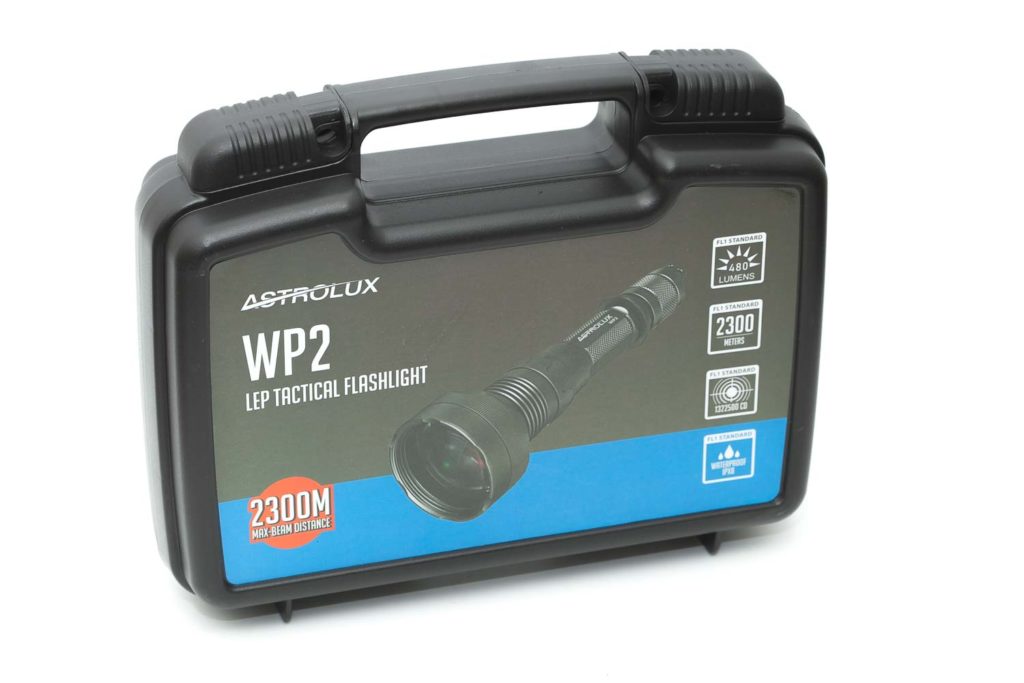
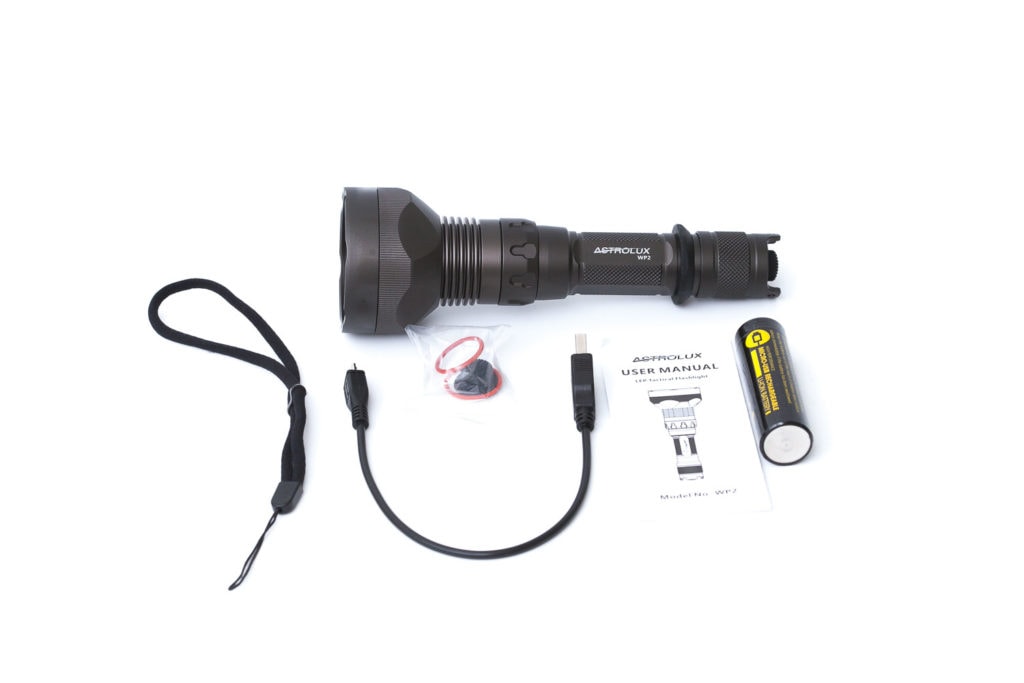
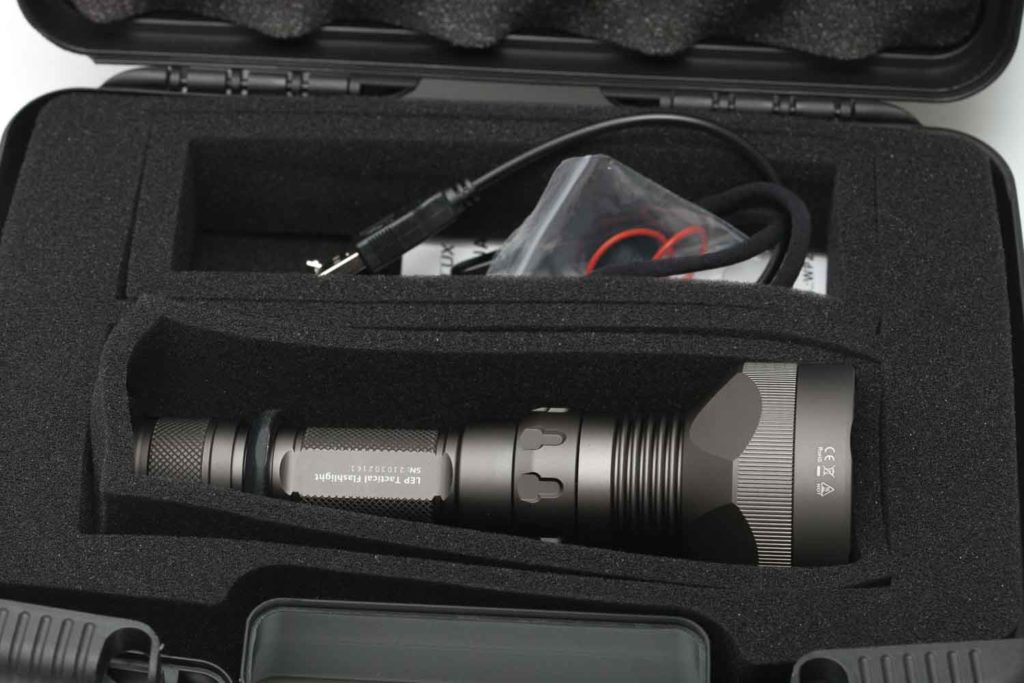
Flashlight in use
The Astrolux WP2 (and WP1) is the first LEP flashlight in the lineup of Astrolux. After producing many succesful high power flashlight, as well as powerful long-range flashlight they were still missing an LEP flashlight in their lineup. The WP2 looks and feels good in hand with enough grip, and a very easy to use user interface.
In case you were wondering, the flashlight has 2 ‘switches’. One at the rear for power, and a magnetic control ring on the side. The control ring has 5 indents, for each mode 1. When you rotate the ring, the ring fall right into each mode setting, and this goes pretty smooth. But there are no symbols or anything, so you’d have to rotate the ring to know what mode you are in.
When you point the flashlight away from you, rotate the ring counter clockwise until it stops. This is Low. When you turn the ring clock-wise, the next indent will be medium, and the next High. The next is Strobe and the last is SOS. That is really easy to use, but I am not a big fan of having SOS or Strobe within the main modes.
For carrying you can use the included lanyard. There is no holster included, so they included the carry case probably. Near the tailcap is a cigar-style grip ring. Have a look below at the picture to see how you can hold the flashlight in a cigar-style position.
Tailstanding: no, it doesn’t stand on its tail very well. It’s possible, but very unstable.
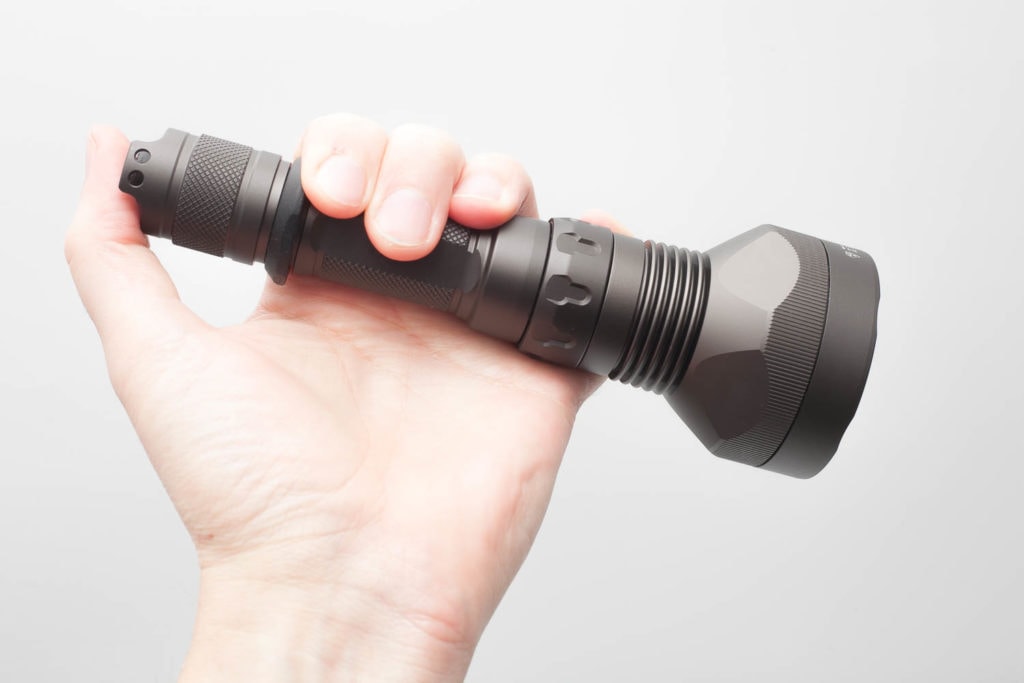
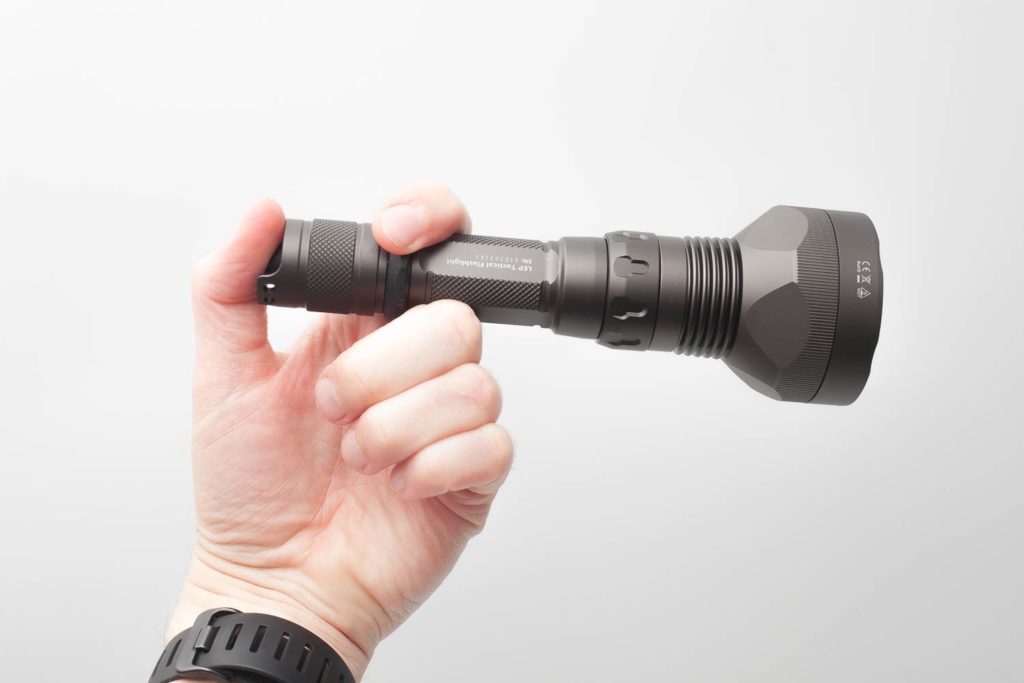
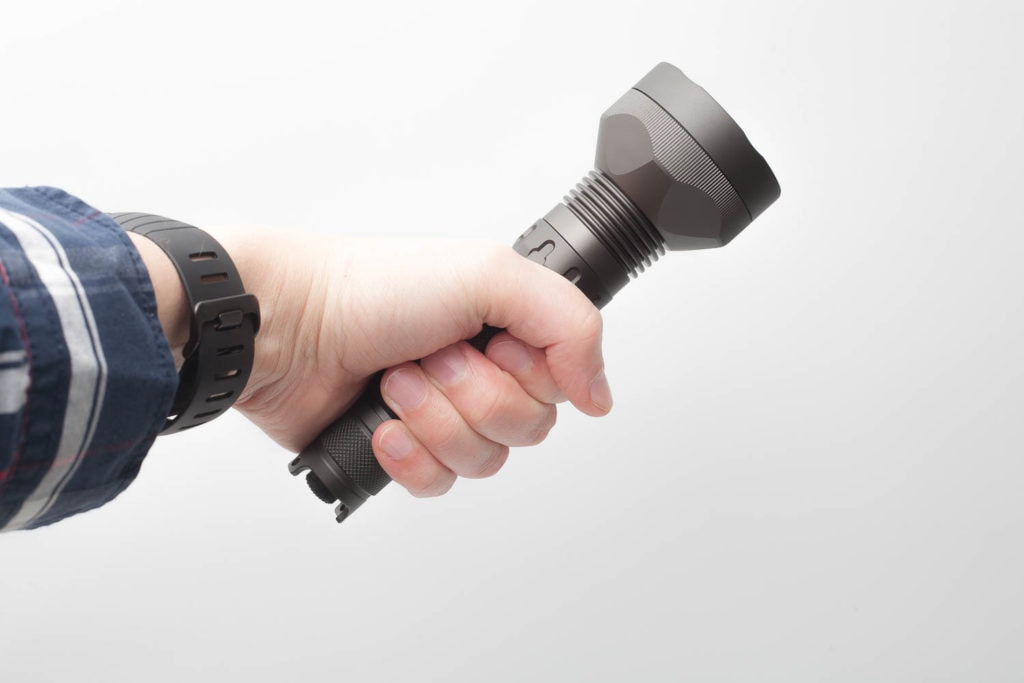
Build Quality, and Warranty
When it comes to anodization, machining and overall build quality, there is really nothing to complain about. It reminds me a lot of the Jetbeam RRT M1X Raptor. Which is very closely related. The body has some kind of knurling, but not very rough. One of the main reasons why it doesn’t feel too slippery, or why it won’t slip out of your hand is the rubber grip ring. It’s not only useful for holding the flashlight in cigar-style, but it definitely helps to increase the grip on this light.
There is no glue used on the threads, so you can easily open up all the parts and pieces. The bezel can be unscrewed as well as the body. There are no secrets for this flashlight.
Threads on the tailcap are anodized, so you can easily break the connection by unscrewing the tailcap by a half-circle. There is 1 red o-ring that keeps the water out. It’s supposed to be IPX8 waterproof, which means it’s able to go underwater for 2 meters without problems. I’m not very convinced that works, but they are claiming that. If you want to be more sure, there is a spare slot left at the tail cap for a second o-ring.
Warranty? Nor the manual, nor the websites says anything about warranty.
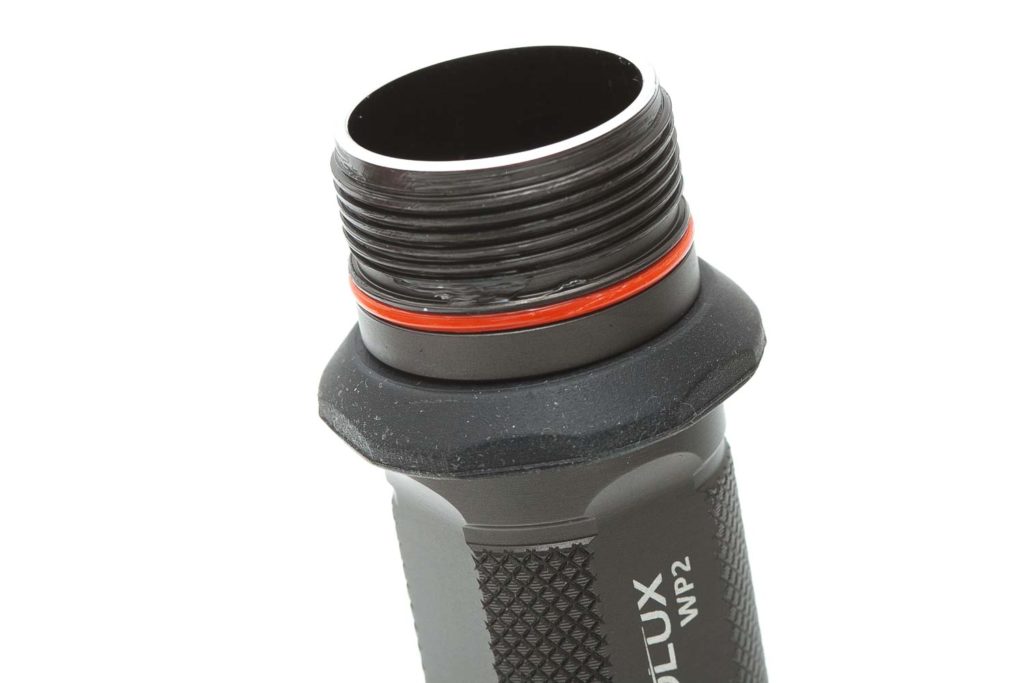
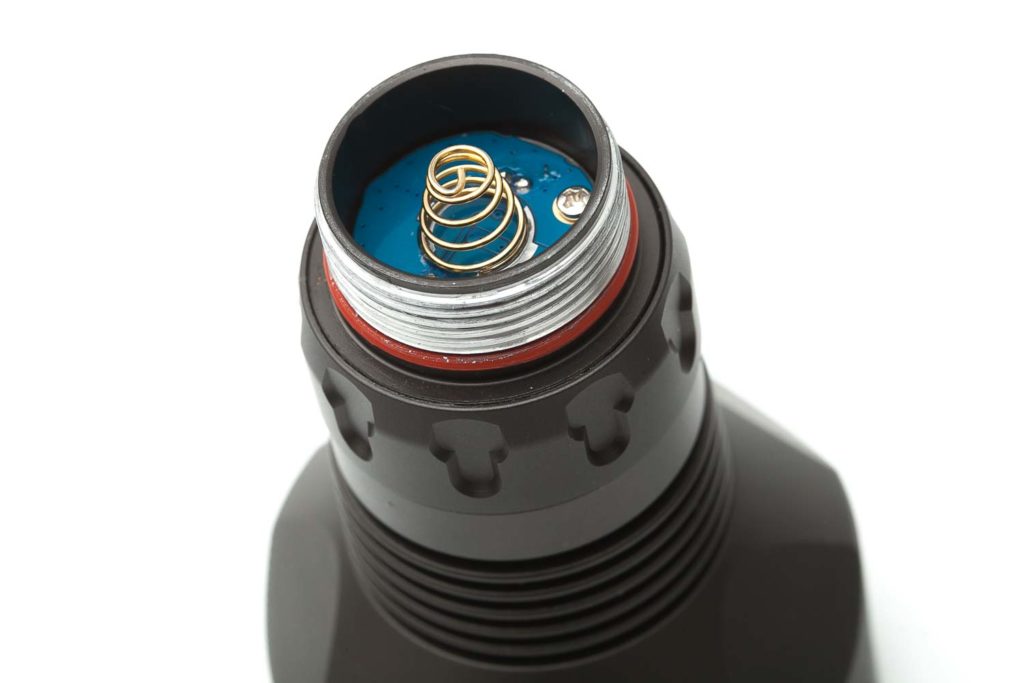
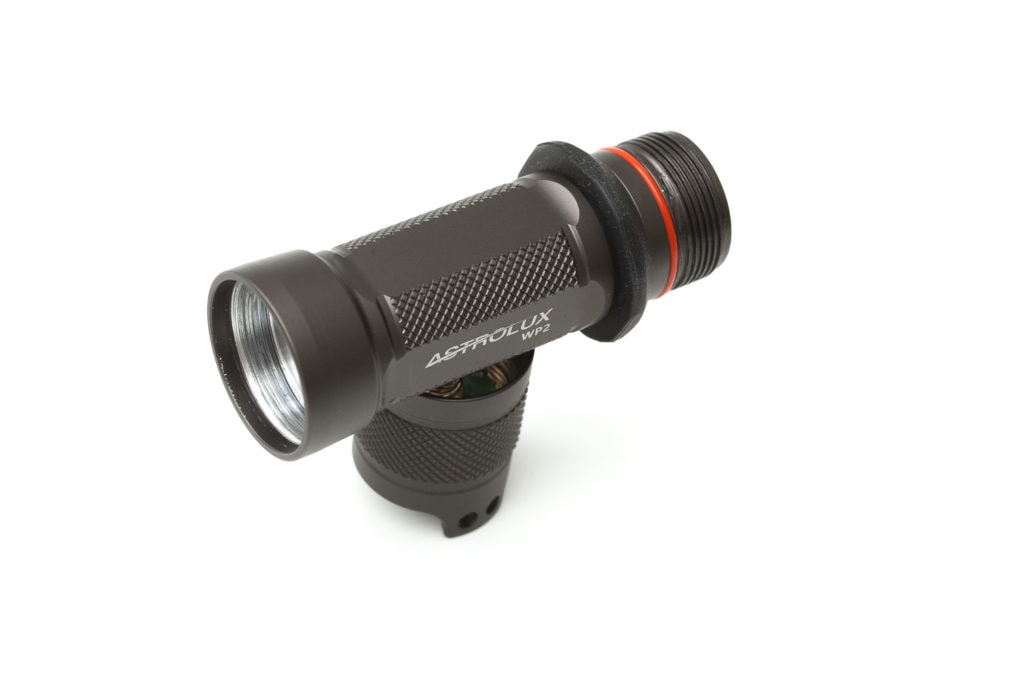
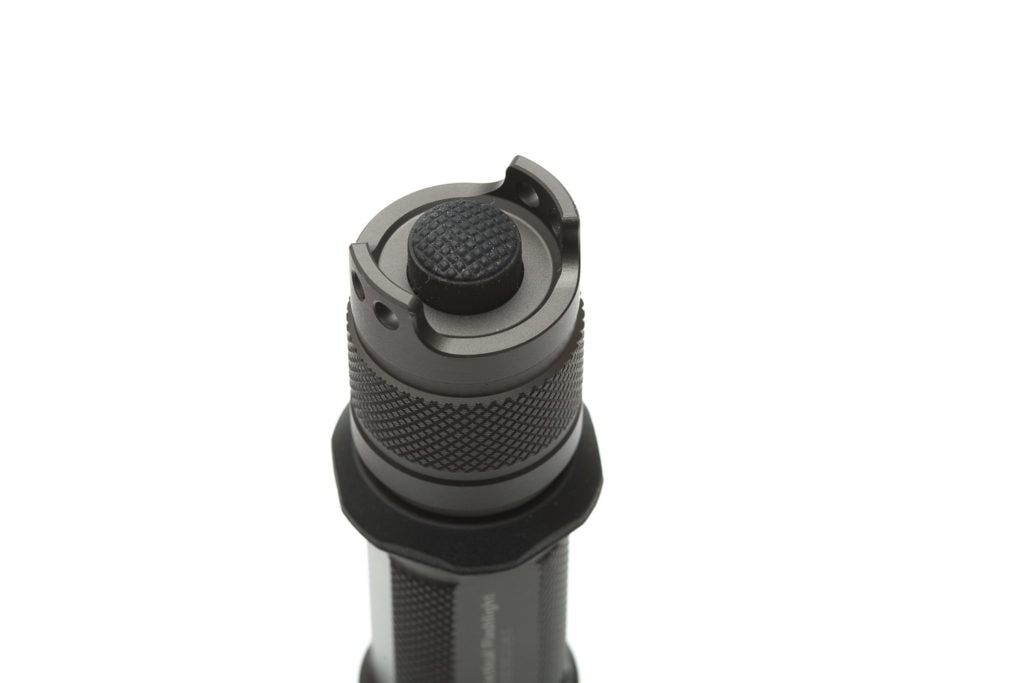
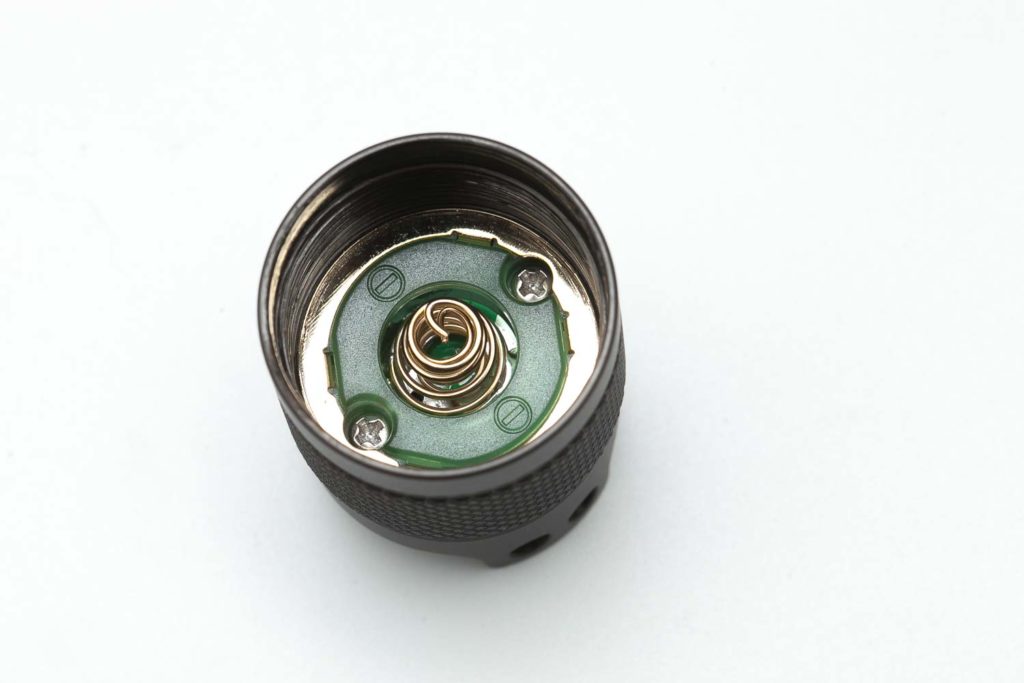
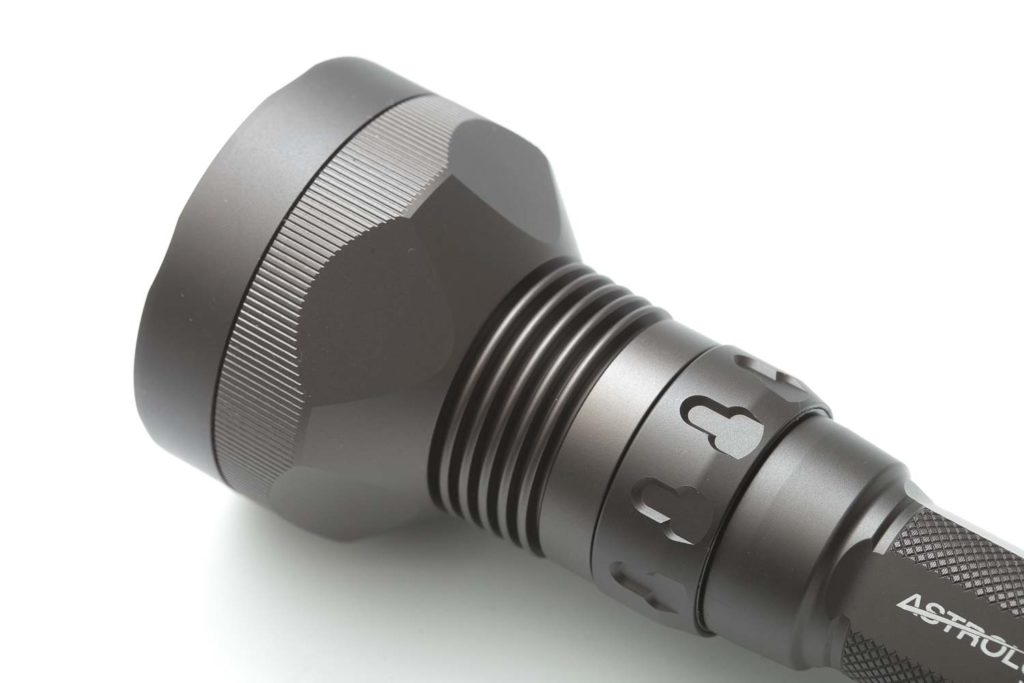
LEP, Lens, Bezel, and Reflector
One of the great things about this flashlight is the omission of glue. Every part of the flashlights can be removed, so it’s not difficult to open the flashlight up and check out the internals. When you do so, please make sure you remove the battery first.
The bezel isn’t really crenelated, but has a few very shallow cutouts. When you place the flashlight with the head down on a flat surface, you’ll still be able to see that the flashlight is turned on.
Removing the bezel is no problem. When you take the bezel off, the lens can be removed. The next thing you can remove is a large o-ring. When the O-ring is gone, you will see a short tube that holds the convex lens in place. Be careful not to drop the lens or damage it. When that convex lens is gone.. there is nothing left that can be taken out from the front. It doesn’t use a reflector!
The LEP source can only be removed from the driver side. Remove the battery tube, and remove the screws from the driver to get access to the Laser source.
People who care a lot about a perfect color beam, you probably don’t want an LEP flashlight. Especially not when people are into white wall hunting. You know, those people who complain about the outer ring having a purple hue (which you’ll never notice when you use that darn thing outdoors). Looking at the beam, you’ll notice the famous donut profile when the wall is closer than 3 meters or so. This is 100% normal for flashlight throwers, including LEP flashlights.
The driver is the same as the Jetbeam M1X and M2S, but the little black gasket and phosphor looks different.
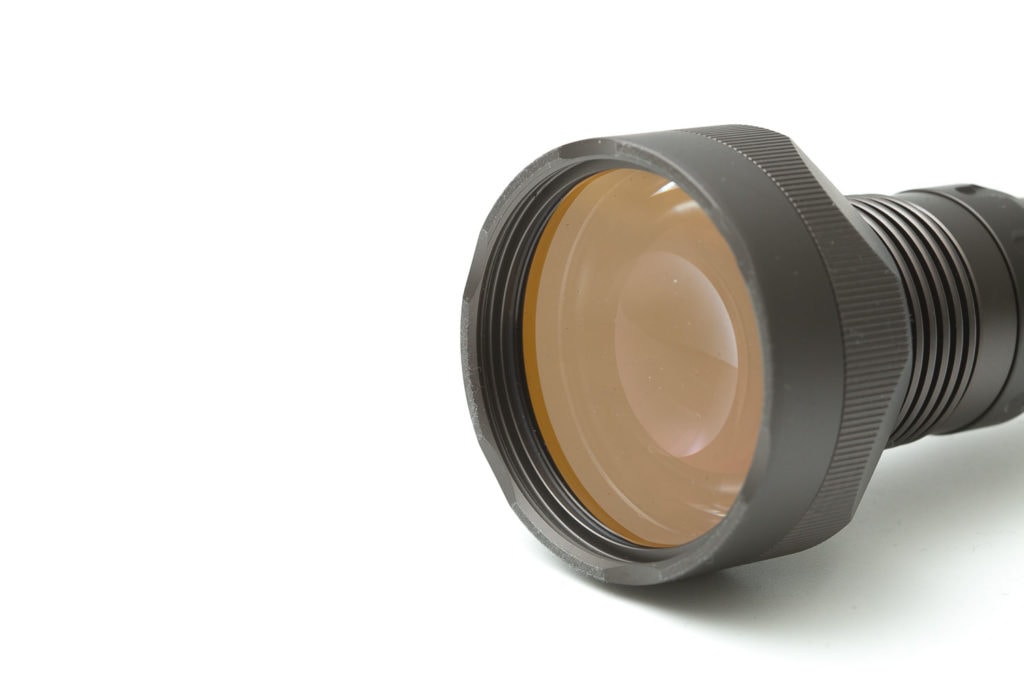
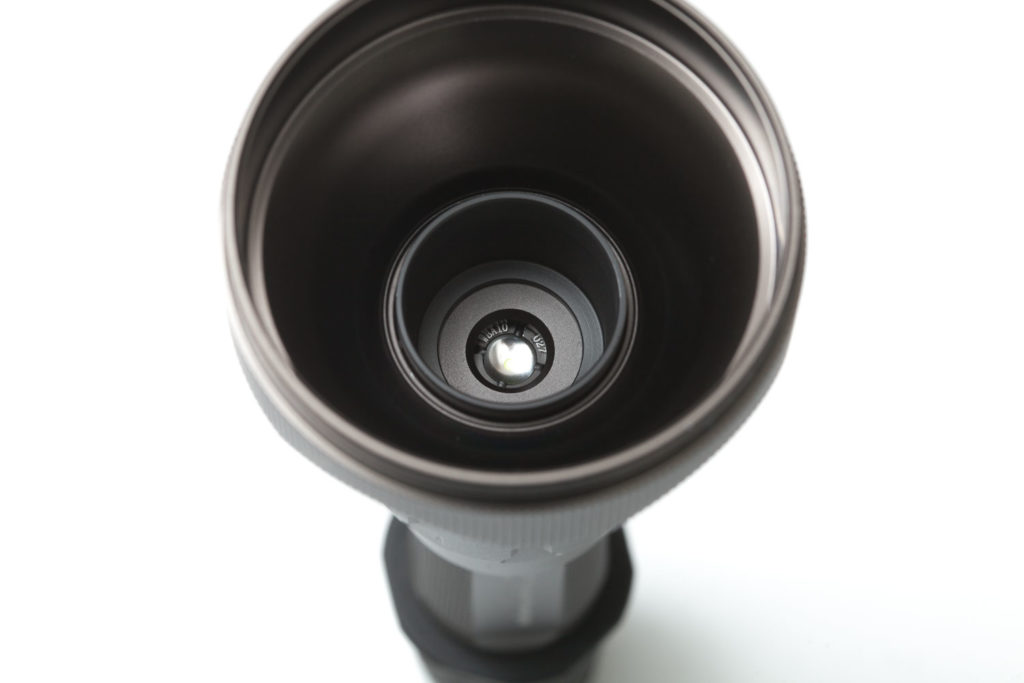
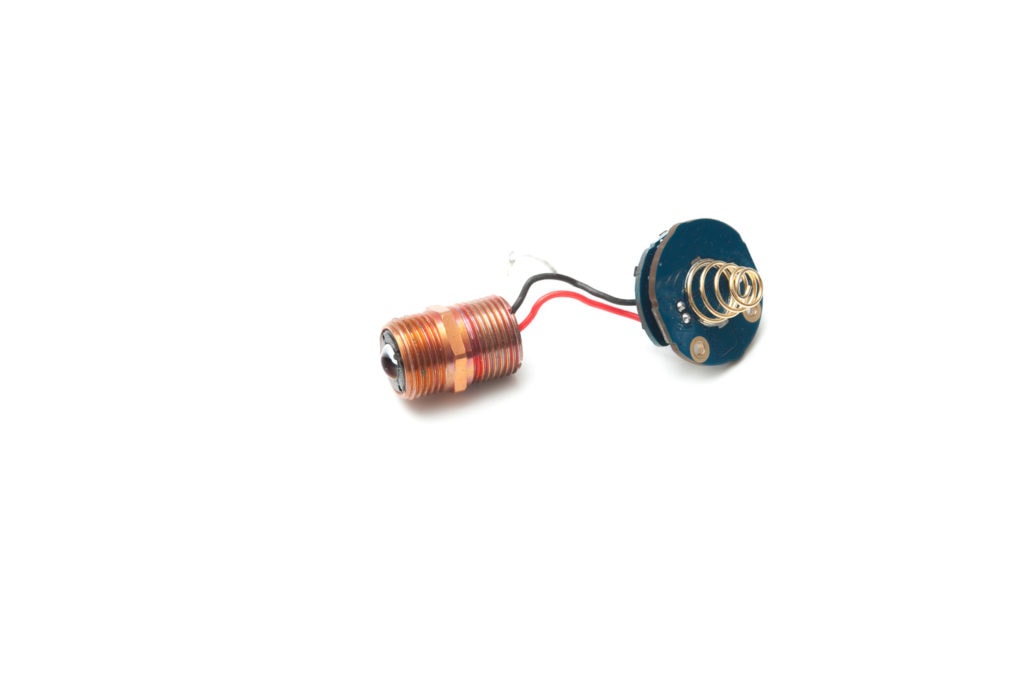
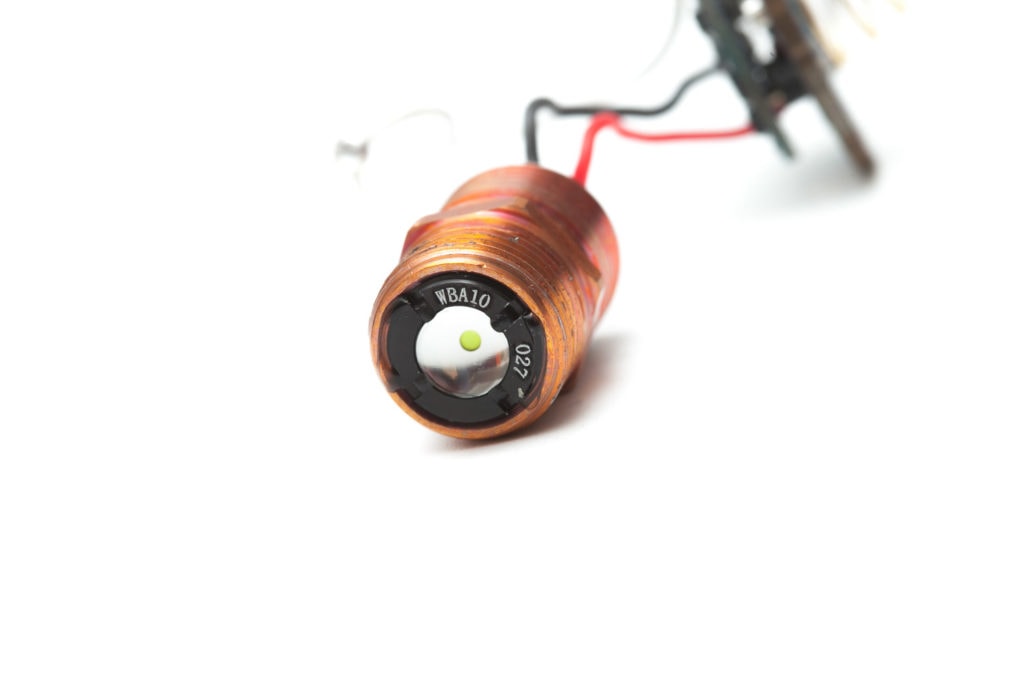
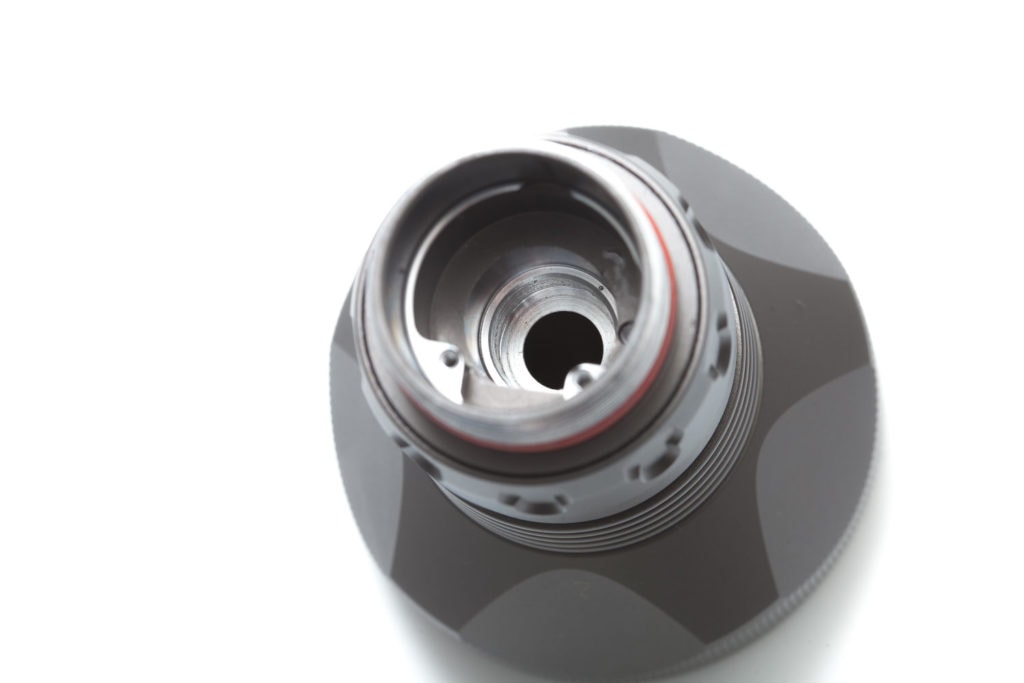
Dimensions and size comparison
- Length: 184 mm / 7.24 ”
- Head diameter: 61 mm / 2.4 ”
- Body diameter: 24-26.5 mm / 0.95-1.05 ” (narrowest-thickest)
Weight:
- Empty: 274.2 g / 9.68 oz
- With battery: 347.3 g / 12.25oz
- Battery: 97.1grams / 2.58oz
LEP Flashlight comparison
Size compared to other LEP flashlights
From left to right: Acebeam W30, Weltool W4, Jetbeam M1X WP-RX, Jetbeam RRT M1X Raptor, Astrolux WP2, Unbranded 26650 LEP, Nextorch T10L, Jetbeam RRT M2S, Weltool W3 PRO, Fenix TK30, Jetbeam M2S WP-RX, Nextorch T7L, Acebeam W10 gen 2.
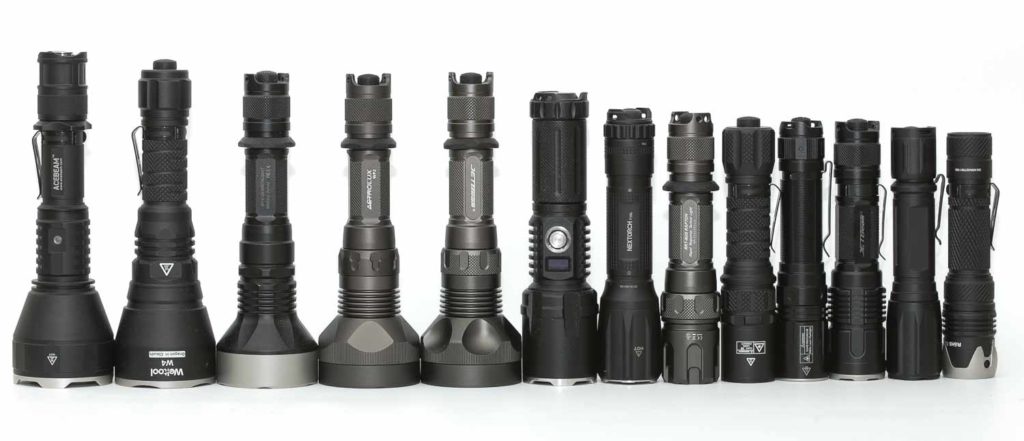
Driver & User Interface:
The UI is really simple and straight forward. Even children know how to use this within 5 seconds. I love that kind of UI. Dead simple.
The tail switch is for power, the magnetic control ring for modes. When you dial the ring counter clockwise (till it stops) it’s Low. Turn it clockwise and you’ll get Medium, High, Strobe and lastly, SOS. I’m not a big fan of having strobe directly after High, but that’s the way it is. There are also no symbols for each mode, so you have to rotate the switch to ‘feel’ in what mode it is. You simply count from 1 to 5 indents. And from Low to SOS.
Available modes:
- Low, Medium, High
- Strobe SOS
Mode memory:
- Yes, it’s just the last used mode.
Blinky modes menu:
- Yes, Strobe and SOS
Low battery warning:
- Nothing that I could notice.. just a decreased output when the battery runs empty.
Lock-out mode:
- No, just use the tail switch to power off.
PWM:
- Not noticeable by eye.
Firmware / UI Conclusion:
So easy to work with this type of flashlight. Not sure why there is a need for SOS or strobe on this type of flashlight.
Batteries & Charging
A battery is included in the package. It doesn’t have a name though, but the specs say it’s a 5000mAh 21700 battery. Near the positive terminal is the charging port. You don’t need a special charger to charge it, because it has a small Micro USB port. You just need a USB power source (laptop, desktop, USB charger, power bank) and you can charge it anywhere and everywhere.
During charge, a small red indicator LED is lit, next to the positive terminal. Unfortunately though, the charge current is really low. I measured between 0.75A and 0.8A. This means that charging will take more than 6 hours. That is much too long.
I would recommend buying a 21700 battery charger that takes long cells, to increase the charge speed drastically. I bought the Nitecore UMS2 just for that reason. It’s not super fast at 2000mA (but should be able to do 3A) but it’s still much faster than 750mA. Please be sure you buy one that takes really long 21700 cells. Not just unprotected. Most chargers won’t accept these long 21700 batteries with protection and USB ports.
I can probably see why they chose such a low current. It has probably to do with the heat is produces during charge. With my thermal camera (which is a little difficult to finetune because of the different emissivity values). But I can imagine this to be relatively correct.
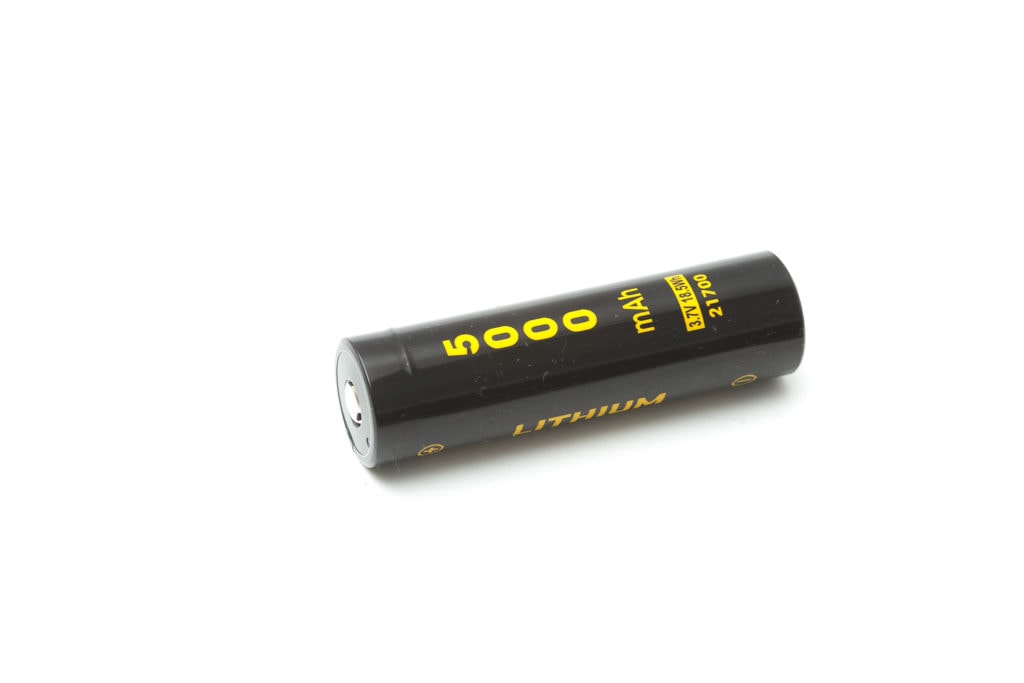
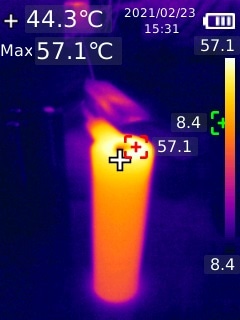
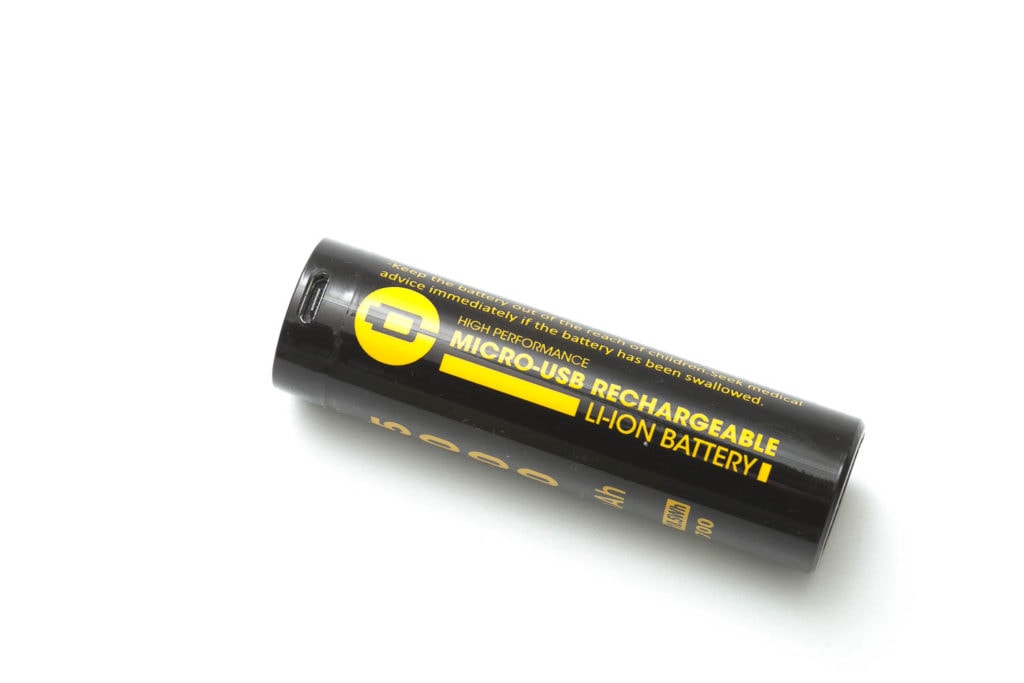
Performance
Lumen measurements:
All output numbers are relative for my home-made Integrating Sphere. It is set up with an Extech SDL400 Lux Meter for measurements including a Kenko PRO1D ND-16 filter. The base measurement is done with a Convoy S2+ that has been tested at 255 lumens.
All of my readings were taken from a fully-charged Astrolux 21700 5000mAh.
Amps were measured with a Fluke 77III, at the tailcap.
| Mode | Advertised lumens | 30sec | start |
|---|---|---|---|
| Low | 15 | 11.33 | 12.59 |
| Med | 75 | 62 | 66 |
| High | 480 lm | 303 lm | 320 lm |
It can clearly not produce 480 lumens, but that’s not what the thrower is about. If it throws as advertised, I would still call it a good thrower, especially if it can hold the output long enough.
Runtime:
The runtime test was done with the 50cm integrating sphere, including the Kenko Pro1D ND-16 filter and Extech SDL400 data logging Lux Meter.
The next graph shows the lumen runtime. This is not as important as the actual throw comparison you can see below.

High drops down just before 3 minutes. The total runtime is just short of 5 hours. (4 hours 55 minutes)
Medium is pretty stable for 5 hours and 43 minutes when the first output drop happens. The total runtime is just short of 7 hours (6 hour and 57 minutes)
Low is pretty stable as well and runs for 11.5 hours when it slowly starts dropping. Around 11 hours and 43 minutes the light turns off.
Below is a comparison graph with the other LEP flashlights. This time it’s calculated with candela. from the measurements below.
You can see that the sustained intensity is not up to the job compared to its competitors.
This is an interactive graph. So you can move your mouse over the graph to see how it performs. You can also click on the name in the graph to highlight the specific runtime line.
Notice: The numbers in the graph are based on the Lux numbers measured in the sphere and not from pointing the flashlight directly at the sensor from a distance, which can differ around 12% from 1 of the tests I did. But it should still give a pretty good indication of the LEP’s performance.
Throw Measurement
Measurements were taken both indoors and outdoors with a professional Hagner E4-X Lux Meter. Even though the numbers of the 5 meter distance test were close, I’m using the 20 meters as my final measurement.
| Mode | Candela | Meters | Yards |
|---|---|---|---|
| Low | 70,400 | 531 | 580 |
| Med | 264,000 | 1028 | 1124 |
| High | 1,248,000 cd (1.25 Mcd) | 2234 meters | 2443 yards (1.39 miles) |
The advertised throw was 1,322,500 cd. So mine performed almost 100,000 candela less. At this intensity, that difference is really hard to notice. And in terms of distance: 2234 meters vs 2300 meters, those are pretty close as well, because that’s just a 3% difference.
Beamshots
For the following beamshots I used a Canon EOS 5D Mk2 and a 100mm lens. manual settings: ISO1600, .5 sec , F4, 5000K
The tower is 450 meters / 492 yards away. These are all LEP flashlights. Some larger than the others.
Astrolux Wp2, Fenix TK30, Jetbeam M1X WP-RX, Jetbeam RRT M1X Raptor, Jetbeam RRT m2S raptor, Acebeam W30, Weltool W4, Weltool W3 PRO.
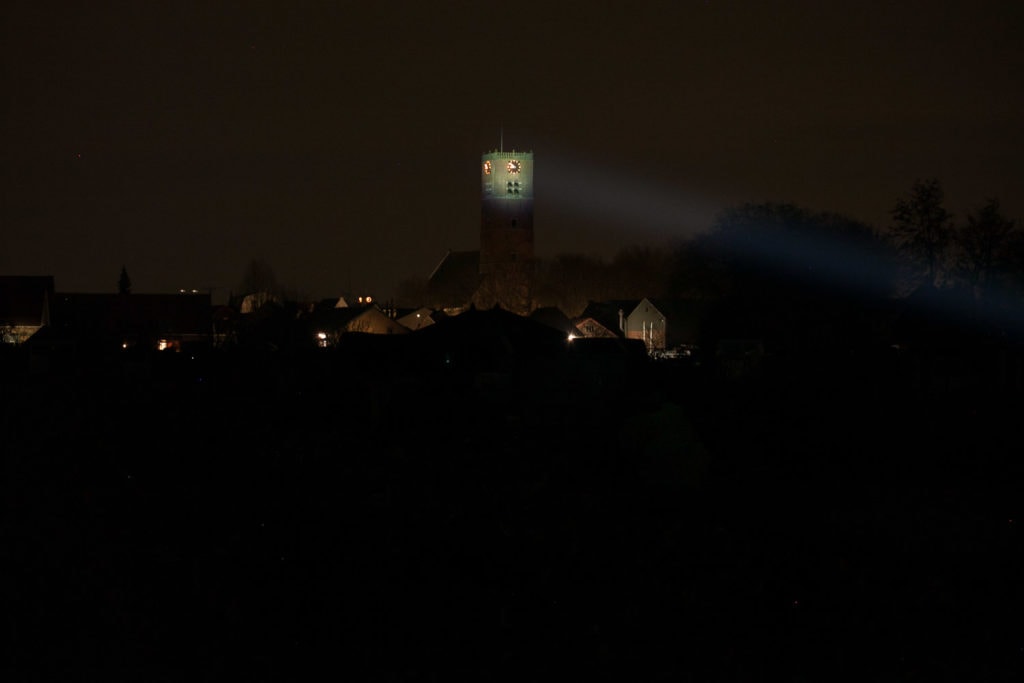
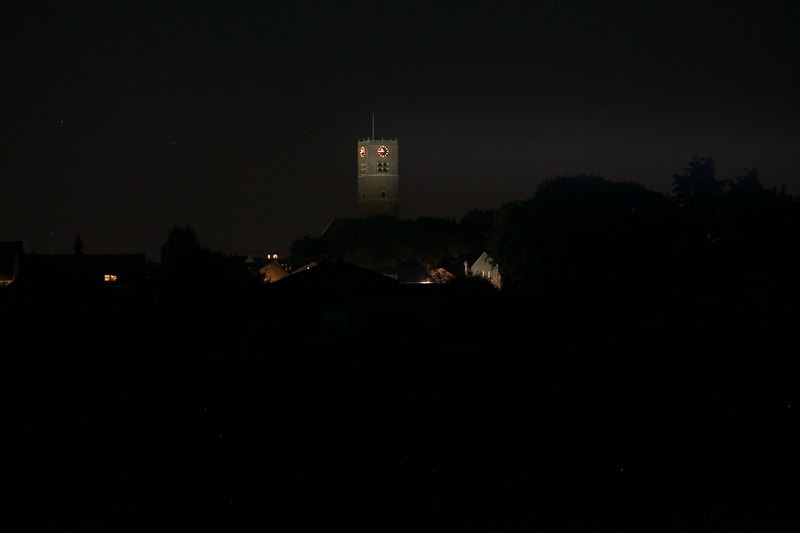
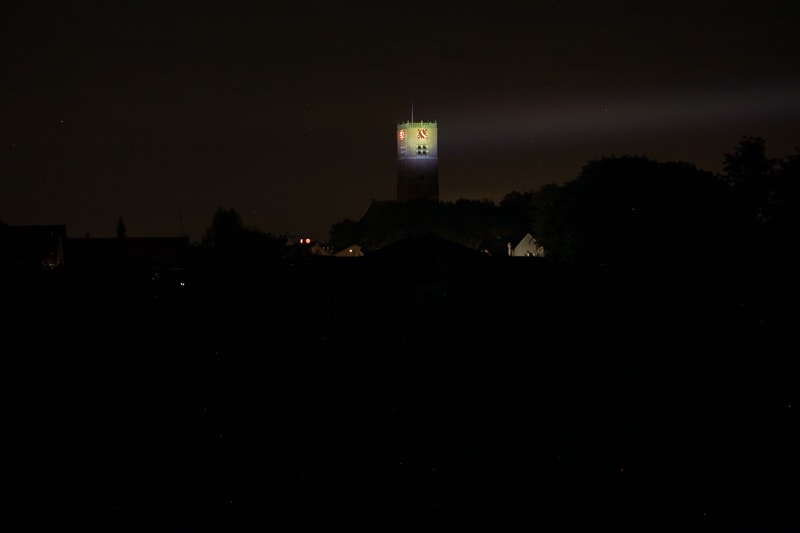
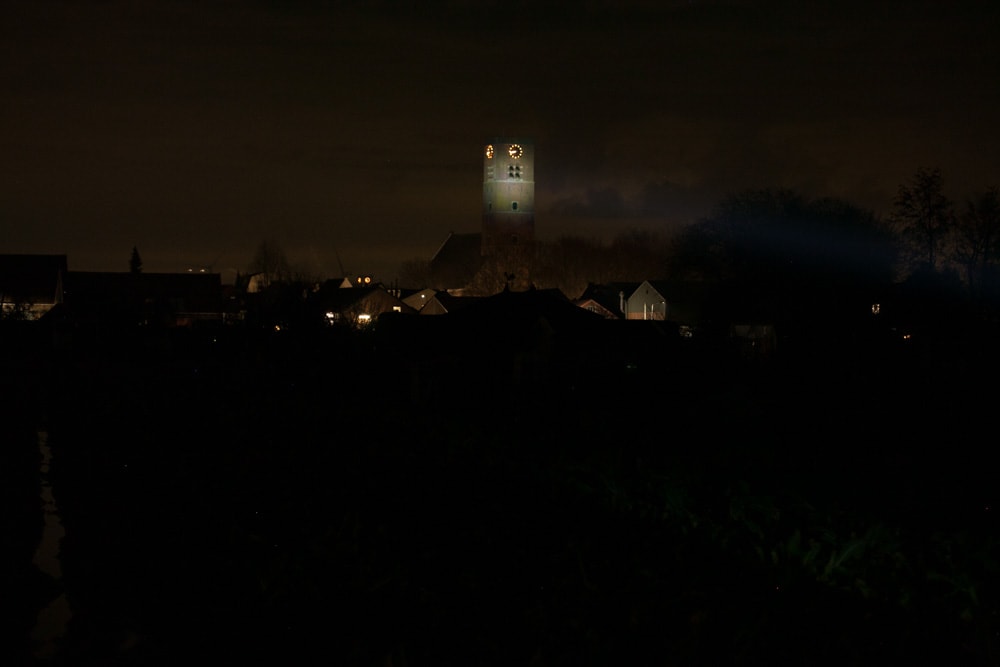
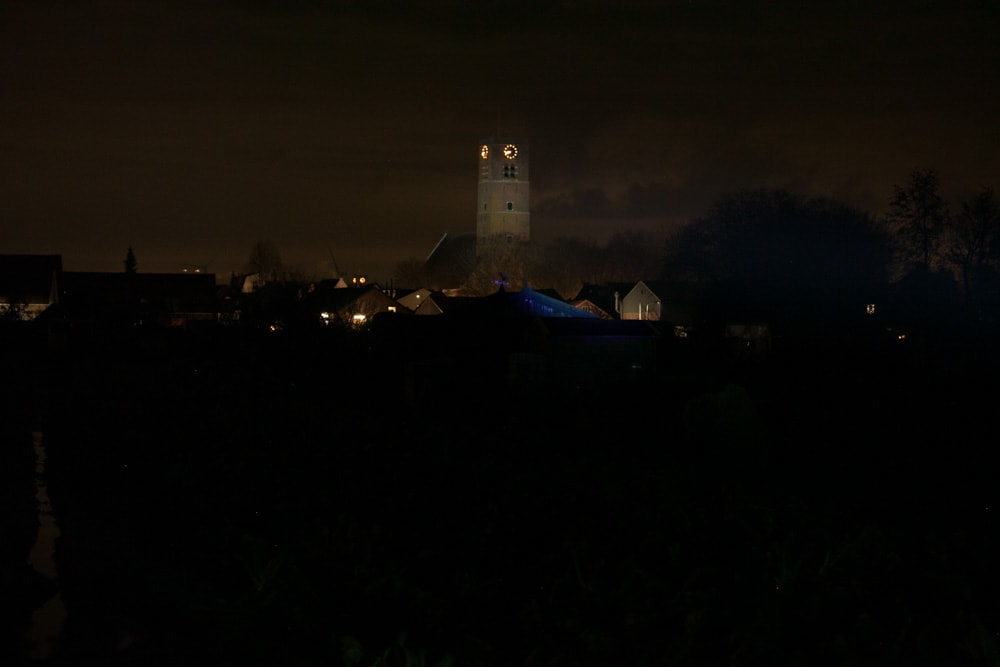
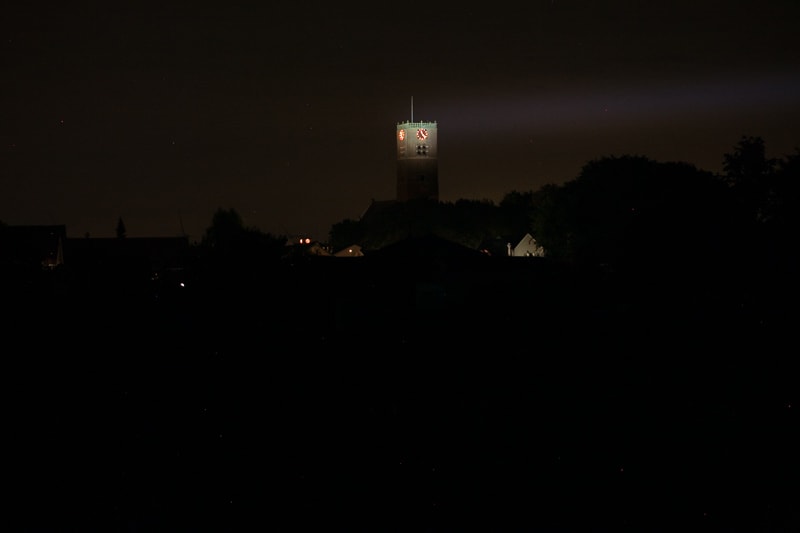
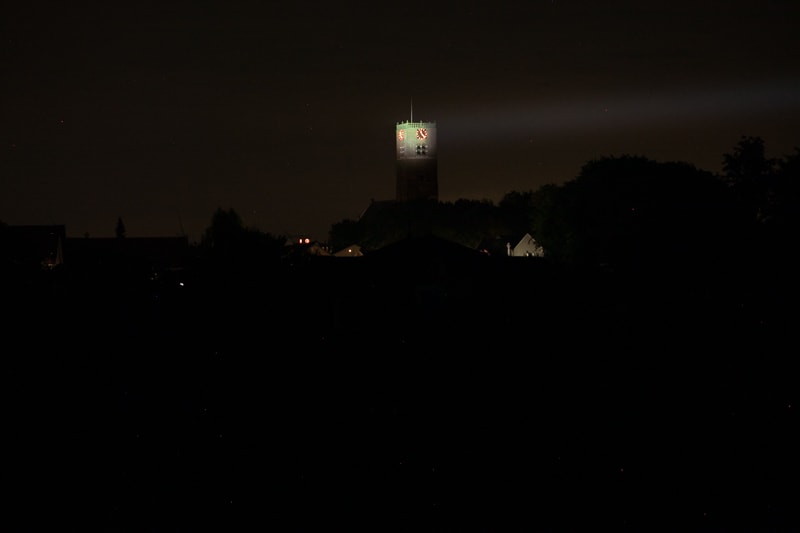
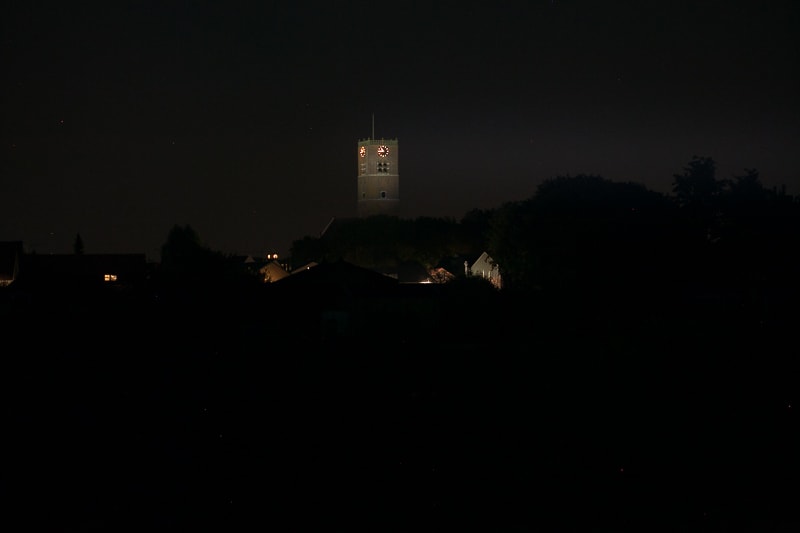
Disclaimer: This flashlight was sent to me for review at no cost by Banggood. I have not been paid to review, nor have I been holding back on problems or defects.
Final Verdict
Pros
- Magnetic control ring for modes changing
- Reaches close to the claimed intensity
- Includes a battery and carry case
Cons
- Drops relatively quickly in output (and doesn’t reach the claimed number of lumens )
- The battery charges slowly at 0.75A

4 stars: ★★★★
With the discount coupon, this is one of the cheapest LEP lights with a 60mm+ head. Unfortunately, it doesn’t keep up with its competitors after a few minutes. If you need to travel light, and still want extreme throw for 1 or 2 minutes and don’t want to spend $300+, the WP2 could be your choice. It’s lightweight and still throws a beam up to a few kilometers (1.39 miles).
Buy Astrolux WP2 here
The Astrolux WP2 is no longer available at Bangood. Instead, check out the list with the best laser flashlights, we reviewed.
1lumen selects and reviews products personally. We may earn affiliate commissions through our links, which help support our testing.